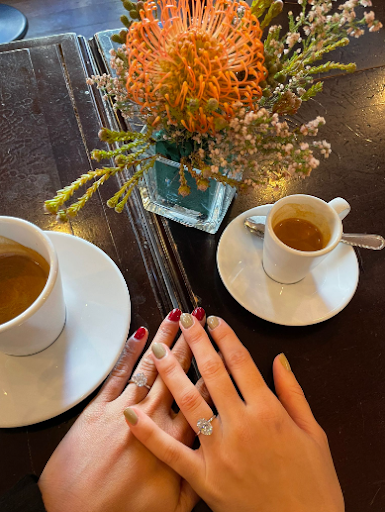
There's a lot of talk about lab-grown diamonds right now, but what exactly are they? And how do they differ from natural diamonds? In this article, we'll break down both concepts so you can decide if you want to invest in them—and why they're so amazing.
When you think about the environmental impact of a diamond, you may think that it's all about how much carbon was emitted in its creation. In fact, this is only part of the story. Diamonds are also a non-renewable resource: they're mined from the earth and can't be replenished. This means that each one we use comes at an enormous cost to our planet's resources; mining diamonds produces tons of waste material and leaves behind toxic sludge at mines like De Beers' Kimberley mine in South Africa.
Lab-grown diamonds are made by replicating their natural formation process in a lab environment—no mining required! Because these gems don't rely on nature to create them, they have no carbon footprint or other impacts on our environment; however, they are still rare stones with exceptional qualities (like color).
As you probably know, lab-grown diamonds are not nearly as expensive as mined diamonds. This is great news for people looking to save money. Mined diamonds are expensive because they're a limited resource, while most lab-grown diamonds can be produced in large quantities and at low cost.
This is also true of conflict-free diamond alternatives like cubic zirconia and moissanite (both of which will cost you less than a tenth of what mined or synthetic diamonds would). So if your budget is tight and you want to buy an engagement ring with real sparkle, it might make sense to choose one that's been grown in a laboratory rather than mined from the earth—you'll still get all the beauty with none of the blood on your hands!
Conflicts diamonds are mined in war-torn countries, and the people who mine them are often exploited. The conflict diamond trade funds violence and human rights abuses in some of the world’s poorest countries.
Lab-grown diamonds do not come from these areas, nor do they fund conflict or human rights abuses. Instead, lab-grown diamonds are mined by scientists in a safe environment—and they’re just as beautiful as their natural counterparts!
Lab-grown diamonds are exactly what they sound like: diamonds that have been grown in a lab. Lab-grown diamonds, also known as cultured or lab-created diamonds, are not synthetic but rather produced by humans. They are a newer category of diamond than mined and synthetic diamonds, and their exact composition is still being studied by gemologists today. However, many experts agree that the process for creating them begins with an industrial diamond seed that's placed inside of a machine called a CVD (chemical vapor deposition) machine—a device used to synthesize material from its component elements through chemical reactions. Once this happens, the carbon atoms form into carbon crystals at high temperatures and pressure similar to how they would in nature over millions of years if left alone unmined. The result? You've got yourself one very beautiful yet affordable stone!
As you can see, lab-grown diamonds are here to stay. They’re more affordable, they don't come from conflicts, and they're certified by the same company that certifies mined diamonds. What's not to love?
Sell your diamonds with ease with Diamond Registry’s comprehensive approach and vast global industry connections to help you find the best buyer for your diamond fast. Visit www.diamondregistry.com/sell-your-ring to take your first step to fast, easy and reliable way of selling your diamond.
Want to check and calculate diamond per carat instantly? Go to DR’s diamond price calculator to know how. Reliable and trusted carat calculator in the diamond industry since!

